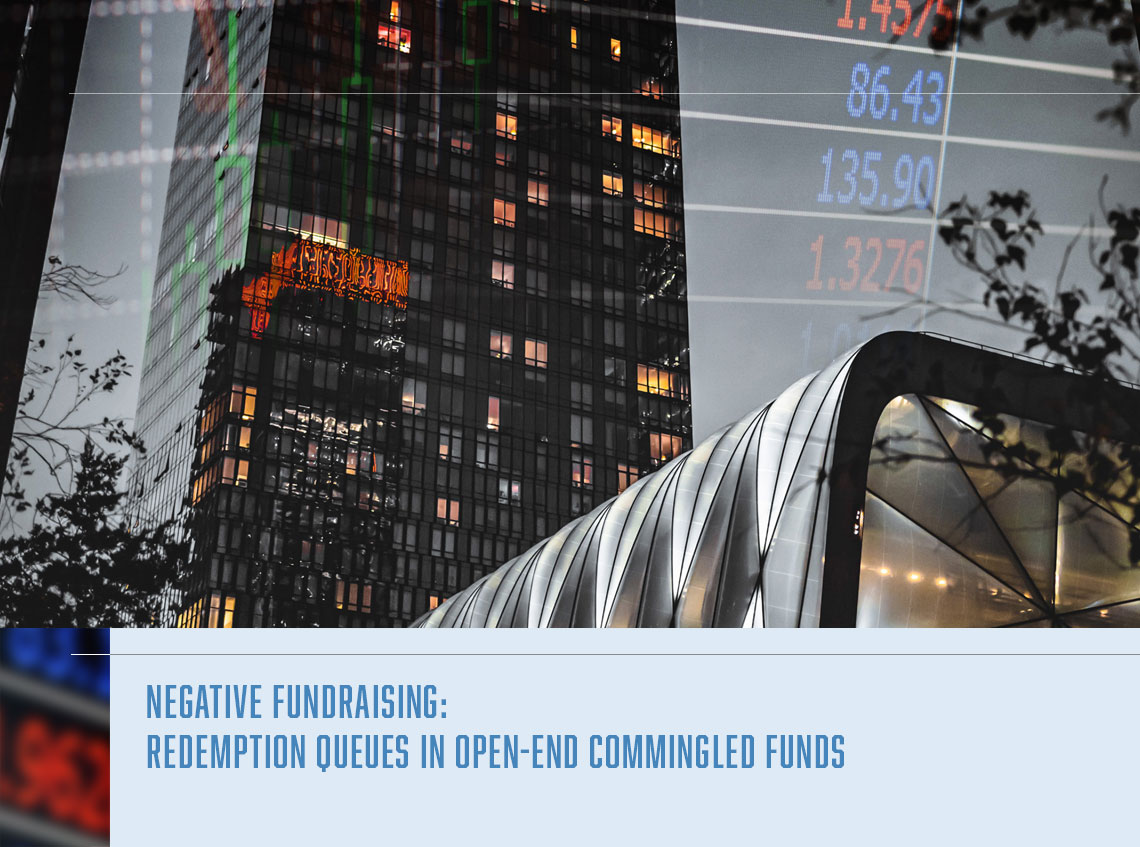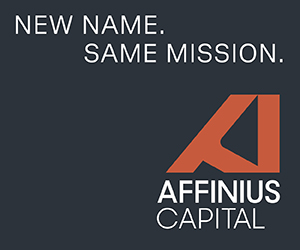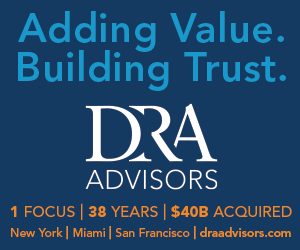PREA Quarterly Feature - Winter 2024

 Rob Kochis
Rob KochisThe Townsend Group
 Nick Moné
Nick MonéThe Townsend Group
The year 2023 was tough for many in the institutional real estate industry as transaction volumes dwindled, valuations declined, and capital formation (fundraising) dried up for most participants. Another source of frustration was the growing exodus (attempted, at least) of investors from the open-end fund universe—call this “negative fundraising”—as a wave of investors sought capital back from investment vehicles, rather than allocate new money for investment.
This article focuses on the growing redemption queues in real estate open-end commingled funds. By our count as of the writing of this article, investors sought more than $52 billion back from domestic open-end funds during the last quarter of 2023, and this trend continued to build in early 2024. Is there an end in sight? Is the magnitude of redemption requests unusual by historical standards? How will investment managers deal with their investors’ requests for a return of capital? How should they?
The Basics
Despite the recent spike in redemption requests, we believe investors like open-end funds. The universe of such funds grew impressively over the past 10 to 15 years, with more funds launched, funds growing larger, and funds targeting a wider variety of strategies and geographies. Investors used such funds to diversify, target investment in a specific property type, seek global investment, and scale risk up or down in their portfolios.
The most distinguishing feature of an open-end fund is that it offers investors the ability to add to—or reduce—their investment on a periodic (most often quarterly) basis. We refer to a reduction as a redemption request. All the redemption requests an open-end fund manager is unable to pay back begin to stack up in a “queue.” Other relevant but important features of open-end funds are that they usually invest in perpetuity, with no finite term. They also generally have a more rigorous valuation discipline (quarterly mark-to-market).
In this article, we focus on the universe of US open-end funds offered to institutional investors (not non-traded REITs typically utilized by retail and/or high-net-worth investors). The core funds that make up the NCREIF Fund Index—Open End Diversified Core Equity (NFI-ODCE) get the most attention, but we also compare the newer universe of specialized, core-plus, and value-added domestic open-end funds.
Townsend advises clients with approximately $50 billion invested in domestic open-end funds. On a quarterly basis, Townsend collects a large amount of data on 54 funds, including cash flows, redemption requests, and performance metrics. The universe of domestic funds includes 25 core and 29 non-core funds, consisting of core-plus / specialized and value-added strategies. Core-plus funds are diversified equity funds, but they carry more risk than NFI-ODCE funds (e.g., more leverage or value-added components). Specialized open-end funds focus on a single property type or on non-equity strategies. Townsend’s universe of domestic open-end funds held property investments aggregating to nearly $545 billion gross asset value as of Sept. 30, 2023 (Exhibit 1).
Current Status
The $52 billion redemption queues across US open-end funds represent the largest queues in the history of Townsend’s records. For core funds alone, the queues have grown to nearly $38 billion, and the queues have been growing steadily since 2018, with one short dip in 2021. Essentially on the same trajectory, investor frustration has been growing with the pace at which requested redemptions have been paid out, especially as market values began correcting in 2022.
With both queues and investor frustration currently high, what are managers to do? Clearly, the interests of fund investors vary. Investors certainly want to avoid additional losses as valuations trend toward further decline. Most also seek to resize to comply with allocation targets. Many need cash, either to pay benefits or to rebalance portfolios to other investment asset classes that may deliver better returns. However, some investors desire long-term exposure, and they want that exposure in a fund that is healthy and viable for the period beyond the immediate cycle.
What Does History Show?
Are investor frustrations with the pace of redemptions justified? Perhaps, but investors have been down this road before. As the trends show in Exhibit 2, when viewed as a percentage of fund net asset values (NAVs), the collective level of redemption requests outstanding among core funds is still less than it was during the depths of the global financial crisis (16% to 17% today versus 21% in 2009). In addition, the amount of the queue is skewed by concentration in a few funds. If the two funds with the largest redemption queues (by percentage) are eliminated, the aggregate queues equal 14.4% of core fund NAV.
Investor frustration with open-end funds is truly highest when redemptions become scarce as markets turn sour. Core funds collectively paid out an average of 5% of their redemption queues each quarter in 2023. Looking back to 2007, NFI-ODCE funds paid out an average of 71% of their queues each quarter. Queues were completely paid off nearly 60% of the time.1 As is evident in Exhibit 3, open-end funds are reliably liquid during good times, but liquidity can evaporate during a market correction.
Viewed another way, however, data reveal a different picture. Arguably, redemptions paid each quarter are more consistent when measured versus fund values (rather than versus the amount of the queue). Exhibit 4 shows that although investor redemption requests fluctuated materially, redemption payments by core funds averaged less than 1.5% of collective NAV since 2007 (with a range of 0.4% to 3.5% of NAV). This suggests the potential exists for managers to utilize modest reserves to continue a consistent pace of redemptions during troubled times.
Non-core open-end funds now make up more than half the universe of domestic open-end funds Townsend monitors, and they make up 46% of aggregate market value. The trends in non-core open-end funds are similar to those of core; however, data suggest capital is generally flowing from core to non-core. Since 2018, investors appear to seek more redemptions from core funds (in both aggregate dollars and percentage terms), and core funds have redeemed a higher percentage of fund NAV.2
How Are Redemptions Paid?
In the US at least, the open-end fund industry has been moving toward consensus on best practices for the redemption process.3 Deadlines to submit a redemption request vary. The most common is 90 days, which is often interpreted to mean prior to the end of the preceding quarter. A growing number of funds are offering shorter deadlines (e.g., 45 or 60 days prior to quarter end). A smaller (but growing) number of funds are offering payouts on a monthly (versus quarterly) basis, which reflects the growing number of funds with parallel vehicles for defined contribution plans that offer daily liquidity.
Many funds also have “lockup” periods of one, two, or three years. Lockups prohibit investors from redeeming quickly after funding a commitment. Lockups are rare among core funds. They are most common for a short period at the inception of a new fund launch, and they are common in open-end funds that pursue non-core investing. Besides encouraging a stable capital base for managers to administer a portfolio, lockups are thought to prevent some gaming activities by investors, such as committing to a fund for a quarter or two to capture gains from a large lease signing at a development project (and thereafter quickly redeeming).
Most funds pay redemption requests at or shortly after a quarter end in order to utilize the established fund value. As discussed in “Real Estate Valuations Overview” in this issue, open-end funds in the US have a disciplined valuation policy, and the quarterly “mark-to-market value” of all assets and liabilities is watched closely. If a redemption request is unpaid, an investor usually continues to participate in a fund with respect to its remaining shares until fully redeemed, subject to whatever fluctuation in fund value is reported in the periods ahead. Today, most US funds allow an investor to rescind a redemption request, often with some formalities regarding form and timing of the rescission notice.
How do managers prioritize redemption payments when a queue builds? In the US, most funds pay out available cash on a pro rata basis. Under the pro rata approach, a manager aggregates the total number of requests and pays regardless of when the request was received. Many managers offer larger investors a benefit by weighting an investor request based on the investor’s total investment in the fund rather than by the size of its redemption request. Also, some de minimis-sized redemption requests may receive priority in payment for administrative reasons.
Pro rata redemptions became prevalent today after trial and error with other methods over many years. In the past, a common approach was to tranche investors and pay each tranche based on the order in which redemption requests were received. This first-in-first-out (FIFO) approach may allow investors to secure a spot in the queue early to get ahead of other investors in payment priority. However, the FIFO approach was thought to encourage a “run on the bank.” Most funds, but not all, have moved away from the FIFO approach.
Manager Considerations for Conserving Cash
Fund-governing documents usually provide managers wide discretion in honoring redemption requests. Guidelines usually specify that payment be based upon liquid assets available (i.e., cash). Fund guidelines often charge the manager with determining redemption amounts based on principles of “prudent management,” considering ongoing cash needs, including fund operating expenses, debt service, and/or retirements, and maintaining operating cash distributions, capital expenditures, reserves, and payments of fees and reimbursements to the fund’s general partner. The manager is also charged with complying with tax rules, qualified investor status, and structural requirements, such as REIT status. High redemption queues usually occur during a market correction, precisely when a manager may desire to make new investments at better valuations. Queues may limit acquisition activity and thereby impact long-term performance.
Selling properties to fund redemption requests is where the rubber meets the road. Do managers do enough when facing large redemption queues? Managers argue that selling under duress is not in the best interests of any investors (those redeeming and those not). However, in a longer-term correction, investors looking back usually wish managers had sold when values first started declining rather than holding on only to see more value evaporate. Not selling certainly contributes to a larger queue, making a modest number of sales an insufficient solution.
Conclusion
No easy solution exists for investors stuck in an open-end fund’s redemption queue. Queue formation is largely cyclical, with queues often growing quickly during a real estate market correction. Under current accepted practice, investors bear the risk of illiquidity. Several approaches may help soften investor frustration:
- Investors are advised to monitor open-end funds closely during favorable market conditions and to use their rights to trim positions and take at least some profits when markets are strong—before the gates to redemption slam shut.
- Investors may look to secondary market trades to resolve redemption requests. Managers should help by communicating and being transparent with investors and perhaps by matching potential buyers and sellers.
- Managers and investors might agree on maintenance of modest reserves for redemptions during weak market conditions (perhaps 2% of NAV—a figure close to the long-term average payout ratio versus fund NAVs). Developing a consensus for an industry-accepted best practice on this issue may counter competitive pressures among funds.
Despite current frustrations with redemption queues, open-end funds have proved to be flexible tools for building institutional real estate portfolios. Judging by the growing number, size, and diversity of open-end funds, investors appear to be largely satisfied with the investment structure—even in the face of limited liquidity during a market downturn. 
1. This is an aggregate figure for core funds combined, including all redemptions made in a quarter. We note that some funds did not satisfy 100% of their queues; however, others paid out more (they satisfied the previous end-of-quarter queue plus requests that came in during the quarter). Collectively, therefore, more was often paid out than the aggregate queue amount at the end of the previous quarter.
2. In the aggregate, redemption queues currently total only 11% of non-core fund NAVs, versus more than 16% for core funds. Since 2018, aggregate redemption queues have been consistently higher among core funds versus non-core funds.
3. Here we continue to focus on US open-end funds. There is an established and growing universe of funds available for investment overseas, especially in Europe and Canada. A universe of global open-end funds also exists. Although similar to those in the US, redemption policies vary by region.
Rob Kochis is a Partner and Nick Moné is an Associate Partner at The Townsend Group.
This article has been prepared solely for informational purposes and is not to be construed as investment advice or an offer or a solicitation for the purchase or sale of any financial instrument, property, or investment. It is not intended to provide, and should not be relied upon for, tax, legal, or accounting advice. The opinions, estimates, forecasts, and statements of financial market trends are subject to change without notice due to changes in the market or economic conditions. We believe the information provided here is reliable, but do not warrant its accuracy or completeness. The information contained herein reflects the views of the author(s) at the time the article was prepared and will not be updated or otherwise revised to reflect information that subsequently becomes available or circumstances existing or changes occurring after the date the article was prepared. Townsend Holdings LLC is a federally Registered Investment Advisor with the U.S. Securities and Exchange Commission.


 About PREA
About PREA




















